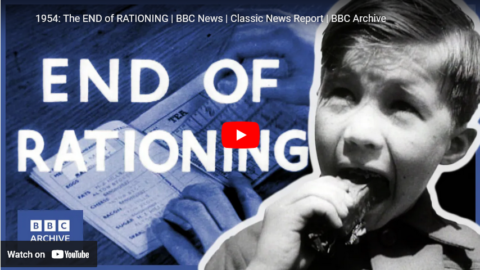BBC Archive
Published 5 Mar 2023“The ration book has done its job. It’s been a long job. Indeed, children up to school-leaving age have never known life without the ration book.”
On the fourth of July, the rationing of meat in Britain came to an end, the final step in dismantling Britain’s whole wartime system of food distribution. After fourteen long years, Britons can at last tear up their ration books.
Richard Baker looks back at some of the key moments in the story of rationing and de-rationing.
Originally broadcast 5 July, 1954.
June 8, 2023
1954: The END of RATIONING
QotD: Heroes, demi-gods and gods in the ancient Greek world
A handful of heroes from Greek mythology become gods as part of their story. The most famous of these is Heracles, raised to godhood at his death, along with Castor and Pollux – twin demi-god heroes with enough divinity between them to make one of them god and they alternated the honor. Leucothea (lit: the white goddess) – the divine form of the woman Ino – makes her appearance in the Odyssey (Book 5!) to save Odysseus.
These figures – complete with tales of being swept up into divinity while still alive or at the moment of their death – are in some way atypical of hero worship in the Greek world. More typical is a figure like Achilles, who very definitely was mortal and very definitely died and whose spirit is very much in the Underworld in the Odyssey (and neatly contrasted with Heracles – only Heracles’ shade is in the underworld, for his soul was divine; but cf. Pindar on Achilles, Olympia 2.75-85). Our sources (e.g. Plin. Nat. 4.26) continue to speak of Achilles as a man, with a physical tomb. And yet Alexander pays him honors (Arr. Anab. 1.12.1) and we have ample evidence for cult observances of Achilles in the Greek world. it was possible to be a man in life, and yet have enough influence to be worthy of cult in death.
This sounds strange, but its worth noting that some of the most common mortal figures to receive this kind of cult worship were founder figures – people (often legendary or mythical in nature) credited with the foundation of a community. We’ve actually discussed that here before in Lycurgus and Theseus, but as you might imagine, such figures were very common. It is not entirely crazy to assume that these figures have some power to shape your world or life, because they already have – you live in the city they founded! They deeds in life continue to shape the confines of your experience – why wouldn’t that influence, in some way, carry with them?
(And while I’m here, I should note that the American architectural veneration of our founder figures on the National Mall is explicitly framed in terms of Mediterranean cult observance. The Lincoln and Jefferson memorials both borrow their forms from Roman temples and contain super-life-sized cult statues exactly as and where a Roman temple would has the cult statue of the god, while the Washington Monument – as an Egyptian style obelisk – mimics Egyptian practice quite intentionally. We even have our monuments to the di manes [the divine shades of your dead ancestors who watch over you] in our war memorials, framed around collective veneration. A Roman time-traveler would have no problem interpreting the display, and might think the many millions of visitors coming from all corners quite pious in their observance.)
Bret Devereaux, “Collections: Practical Polytheism, Part IV: Little Gods and Big People”, A Collection of Unmitigated Pedantry, 2019-11-15.




